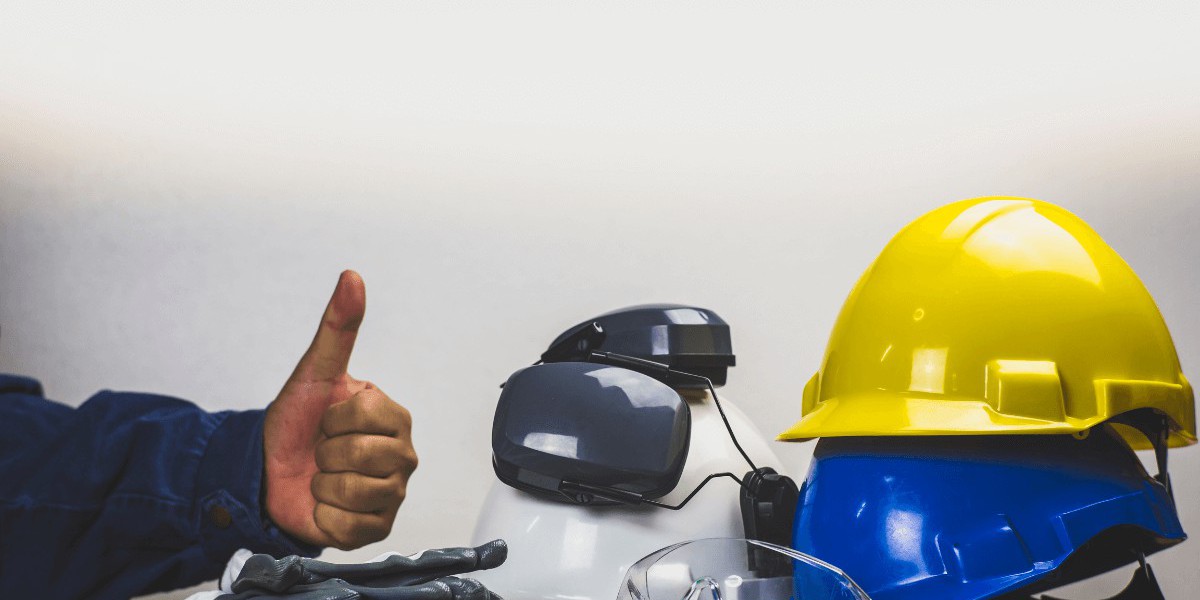In today's ever-evolving landscape, ensuring safety in the workplace has become a top priority for employers across various industries. Personal Protective Equipment (PPE) plays a crucial role in safeguarding workers from potential hazards, ranging from physical injuries to exposure to harmful substances. PPE refers to specialized gear, equipment, or garments designed to protect individuals against occupational risks.
Advancements in PPE have revolutionized safety standards, incorporating innovative technologies and materials to enhance protection and comfort. From smart sensors and augmented reality to antimicrobial fabrics and integrated communication systems, modern PPE is equipped with features that not only safeguard workers but also improve their overall experience.
By staying updated with the latest developments in PPE, employers can play a proactive role in ensuring the safety and well-being of their workforce. This comprehensive guide will delve into exciting advancements, market competition, various types of PPE, and employer responsibilities.
Overview of Exciting Developments in Modern PPE
Advancements in personal protective equipment (PPE) have revolutionized safety standards across industries, ensuring the well-being of workers in hazardous environments. The rapid pace of technological innovation has led to the development of cutting-edge solutions that enhance both the effectiveness and comfort of PPE.
Incorporation of Smart Technologies
One significant trend in modern PPE is the incorporation of smart technologies. Smart sensors embedded in safety garments and equipment allow for real-time monitoring of vital signs, temperature, and exposure to hazardous substances. These sensors provide valuable data to both workers and employers, enabling proactive intervention and prevention of potential risks.
Integration of Augmented Reality
Augmented reality (AR) is also making its mark in the realm of PPE. AR-enabled protective visors and glasses provide workers with enhanced situational awareness, overlaying digital information onto their field of vision. This technology aids in navigation, identification of potential hazards, and remote collaboration, ultimately improving worker efficiency and safety.
Utilization of Antimicrobial Fabrics
To combat the spread of infections and diseases, PPE manufacturers are increasingly incorporating antimicrobial fabrics into their products. These fabrics are designed to inhibit the growth of bacteria and other microorganisms, reducing the risk of contamination and transmission. This innovation plays a crucial role, particularly in the healthcare industry, where protecting both healthcare workers and patients is paramount.
Development of Flexible and Lightweight Materials
Comfort and mobility are essential factors when considering the adoption and consistent use of PPE. Traditional bulky and restrictive designs have given way to more flexible and lightweight materials. These advancements ensure that workers can carry out their tasks with ease and minimal discomfort, without compromising their safety.
Enhanced Communication Systems
The ability to effectively communicate is crucial, especially in high-risk environments. PPE manufacturers are integrating communication systems, such as built-in microphones and speakers, into protective gear. This allows workers to stay connected with their teams, receive important instructions, and raise alerts quickly and efficiently.
Market Competition in PPE Gloves
In the fast-paced world of personal protective equipment (PPE), the market for PPE gloves is highly competitive. Manufacturers and suppliers constantly strive to innovate and meet the evolving needs of industries where hand protection is crucial. This section delves into the competitive landscape of the PPE gloves market, highlighting key players and market trends.
Key Players in the PPE Gloves Market
- Ansell Limited: With a rich history in manufacturing PPE gloves, Ansell Limited has established itself as a leading player in the industry. Their wide range of gloves caters to various sectors, including healthcare, manufacturing, and construction.
- Top Glove Corporation Berhad: As the world's largest manufacturer of gloves, Top Glove has an extensive global presence. The company offers a diverse portfolio of PPE gloves, contributing to its dominance in both the medical and industrial sectors.
- Honeywell International Inc.: Honeywell combines its expertise in technology and safety to produce high-quality PPE gloves. Their innovative designs and materials ensure optimum protection and comfort for users across different industries.
- Kossan Rubber Industries Berhad: Known for its strong emphasis on research and development, Kossan Rubber Industries offers a wide range of gloves for diverse applications. They prioritize quality and adherence to stringent standards.
These are just a few of the key players shaping the market, but there are many other manufacturers and suppliers contributing to the competition.
Market Trends in PPE Gloves
- Advanced Materials and Technologies: The PPE gloves market has witnessed the integration of advanced materials and technologies, such as smart sensors and antimicrobial fabrics. These innovations aim to enhance protection, comfort, and durability.
- Regulation and Standardization: Governments and regulatory bodies are increasingly focusing on the standardization of PPE gloves to ensure safety and quality. Compliance with stringent regulations has become a key priority for manufacturers.
- Increased Demand: The COVID-19 pandemic has significantly increased the demand for PPE gloves, especially in healthcare settings. This surge in demand has led to innovative solutions, efficient manufacturing processes, and capacity expansions.
- Environmentally Friendly Practices: Sustainability is gaining traction in the PPE gloves market. Manufacturers are exploring eco-friendly materials and adopting sustainable production practices to minimize the environmental impact of their products.
Future Outlook
The PPE gloves market is expected to witness continued growth and innovation. The integration of technologies like augmented reality and smart sensors may revolutionize the way gloves are designed, manufactured, and used. Additionally, advancements in glove materials, such as the development of flexible and antimicrobial fabrics, will further enhance user comfort and protection.
Types of Personal Protective Equipment (PPE)
Personal Protective Equipment (PPE) is essential in various industries to protect workers from occupational hazards and ensure their safety. Understanding the different types of PPE and their specific applications is crucial for employers and employees alike. Let's explore the key categories of personal protective equipment:
- Head Protection
Head protection is essential for safeguarding workers against falling objects, electrical hazards, and impacts. Helmets or hard hats are commonly used to provide protection to the head and reduce the risk of severe head injuries.
- Eye and Face Protection
Eye and face protection are vital in environments where there are potential hazards such as flying debris, chemical splashes, or harmful radiation. Safety glasses, goggles, face shields, and full-face respirators are among the PPE used to protect the eyes and face.
- Hearing Protection
Exposure to high levels of noise can lead to hearing loss and other auditory issues. Earplugs and earmuffs are commonly used hearing protection devices to reduce the impact of noise in the workplace.
- Respiratory Protection
Respiratory protection is crucial when working in environments with airborne contaminants, hazardous substances, or inadequate oxygen levels. N95 respirators, half-face masks, full-face masks, and powered air-purifying respirators (PAPRs) are examples of respiratory protective equipment.
- Hand and Arm Protection
Hands and arms are particularly vulnerable to injuries in various work settings. Gloves are the most commonly used PPE for hand and arm protection. They come in different materials and types, including cut-resistant gloves, chemical-resistant gloves, and heat-resistant gloves.
- Body Protection
Body protection focuses on safeguarding workers from physical injuries, chemical exposure, and other hazards. This category includes items like coveralls, safety vests, aprons, and full-body suits, depending on the specific workplace requirements.
- Foot and Leg Protection
Feet and legs are susceptible to injuries from falling objects, crushing, and punctures. Safety footwear such as steel-toed boots, puncture-resistant shoes, and metatarsal guards provide protection against these hazards.
- Fall Protection
For individuals working at heights or in elevated areas, fall protection equipment is crucial. Harnesses, lanyards, and lifelines are used to prevent falls and minimize the risk of severe injuries.
It is important to note that the selection and use of PPE should be based on a thorough assessment of the workplace hazards and individual needs. Employers must ensure proper training, maintenance, and regular inspections of PPE to ensure its effectiveness in protecting workers.
Employer Responsibilities and Regulatory Compliance in PPE
Ensuring a safe working environment is a top priority for employers, and personal protective equipment (PPE) plays a crucial role in achieving this goal. Employers have specific responsibilities when it comes to the effective use of PPE and complying with regulations. By understanding and fulfilling these responsibilities, employers can protect the health and well-being of their employees while also meeting legal requirements.
Providing Training and Education
One of the primary responsibilities of employers is to provide comprehensive training and education on the proper use of PPE. This includes educating employees about the specific types of PPE required for their tasks, how to properly wear and adjust the equipment, and the limitations and potential risks associated with its use. Training sessions should be conducted regularly to ensure that employees stay up to date with the latest guidelines and best practices.
Conducting PPE Assessments
Employers must assess the workplace to identify potential hazards that require the use of PPE. This assessment should include a thorough evaluation of the tasks performed, the equipment and materials used, and any potential exposure to harmful substances or conditions. Based on the assessment, employers can determine the appropriate types of PPE needed and make them readily available to employees.
Providing Appropriate PPE
Employers are responsible for providing employees with PPE that is suitable for the specific tasks and hazards involved. This includes ensuring that the equipment fits properly, is in good condition, and meets the necessary safety standards. Employers should regularly inspect and maintain the PPE to ensure its effectiveness and replace any damaged or expired equipment promptly.
Enforcing PPE Usage
Employers must enforce the proper use of PPE by establishing clear policies and procedures. This includes implementing consequences for non-compliance and regularly monitoring employees' adherence to these policies. It is essential to create a culture of safety where employees understand the importance of using PPE and feel empowered to raise concerns or report any issues they encounter.
Keeping Up with Regulatory Changes
Employers must stay informed about relevant regulations and guidelines related to PPE. This includes monitoring updates from regulatory bodies such as the Occupational Safety and Health Administration (OSHA) and ensuring compliance with any new requirements. By keeping abreast of regulatory changes, employers can make necessary adjustments to their safety protocols and ensure ongoing compliance.
Consulting with Experts
To ensure the effectiveness of their PPE programs, employers may need to consult with health and safety consultants or safety professionals. These experts can provide valuable guidance on selecting the most appropriate PPE, implementing effective safety measures, and interpreting complex regulations. By leveraging their expertise, employers can enhance their safety programs and guarantee the well-being of their employees.
Future Trends and Predictions in PPE
As the world continues to evolve and face new challenges, the field of Personal Protective Equipment (PPE) is also rapidly advancing to meet the changing needs of various industries. Emerging technologies and trends in PPE are shaping the future of workplace safety. In this section, we will explore some of the exciting developments and predict what the future holds for PPE.
Integration of Smart Technologies
One of the most significant trends in PPE is the integration of smart technologies. From smart sensors to augmented reality, these innovations are revolutionizing the way PPE is used and monitored. Integrated sensors in gloves and garments can detect environmental factors, such as temperature and air quality, and alert the wearer in real-time. This technology not only enhances safety but also provides valuable data for employers to analyze and improve workplace conditions.
Advanced Materials and Design
Advancements in material science have paved the way for more effective and comfortable PPE. Antimicrobial fabrics help prevent the growth and spread of harmful bacteria, reducing the risk of infections. Flexible materials allow for greater mobility and range of motion without compromising protection. Comfortable designs are becoming an integral aspect of PPE, ensuring that workers can wear their gear for extended periods without discomfort or fatigue.
Communication and Connectivity
In the future, PPE will not only protect workers but also facilitate seamless communication. Communication systems embedded in PPE enable workers to stay connected and coordinate tasks efficiently. Whether it's through built-in microphones and speakers or innovative headset designs, PPE will become an essential tool for effective teamwork and communication in various industries.
Enhanced Protection and Risk Mitigation
PPE advancements will continue to focus on enhancing protection and mitigating risks. For instance, face masks will incorporate advanced filtration systems to provide better defense against airborne particles, including viruses and pollutants. Innovations in gloves will address the risk of allergic reactions and skin irritation, promoting safer and more comfortable hand protection.
Personalized and Tailored Solutions
The future of PPE will see a shift towards more personalized and tailored solutions. PPE manufacturers will invest in research and development to create gear that fits individual body shapes and sizes, ensuring optimal comfort and protection. Customizable PPE will enable workers to focus on their tasks without feeling restricted or compromised in their movements.
Predictions for the Future
Looking ahead, we can anticipate further integration of technology into PPE, such as wearable devices that monitor vital signs and provide real-time feedback to ensure the health and well-being of workers. The use of artificial intelligence and machine learning algorithms will also play a significant role in optimizing PPE performance and predicting potential hazards.
Furthermore, as environmental concerns continue to rise, sustainable PPE solutions will gain more prominence. Manufacturers will explore eco-friendly materials and manufacturing processes that minimize environmental impact without compromising safety.
Conclusion
Staying updated with the latest advancements in Personal Protective Equipment (PPE) is crucial for ensuring safety in the workplace. Throughout this comprehensive guide, we have explored the impact of innovative technologies and materials used in modern PPE, the competitive landscape of the PPE gloves market, various types of PPE and their applications, and employer responsibilities in implementing PPE.
By utilizing smart sensors, augmented reality, and integrated communication systems, PPE has become more effective in protecting workers from hazards and promoting better communication. The use of antimicrobial fabrics and flexible materials has enhanced both comfort and durability. Regulations and compliance ensure that PPE meets the highest standards and guarantees maximum protection.
As the demand for PPE continues to increase, healthcare providers, employers, and individuals must consider the specific roles and benefits of different PPE products. Staying updated with industry trends and advancements will enable us to proactively address challenges and effectively protect those who rely on PPE for their safety.
Remember, PPE is not only an integral aspect of workplace safety but also a crucial defense against harmful exposures. By consistently implementing and using PPE, we can minimize risks, protect our health, and create safer working environments.
Let's prioritize personal protection, embrace revolutionary developments, and always strive for the highest standards in PPE.



